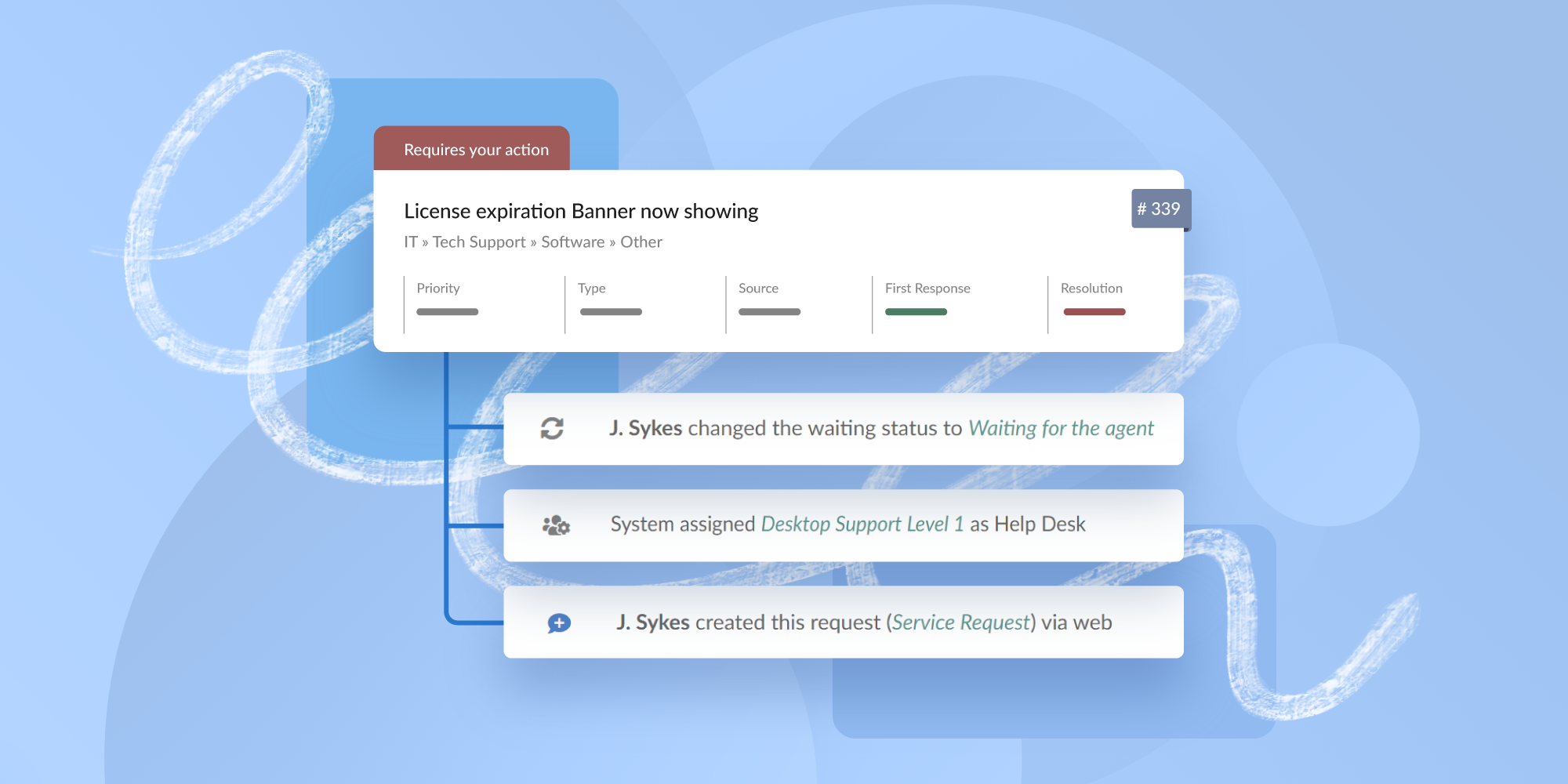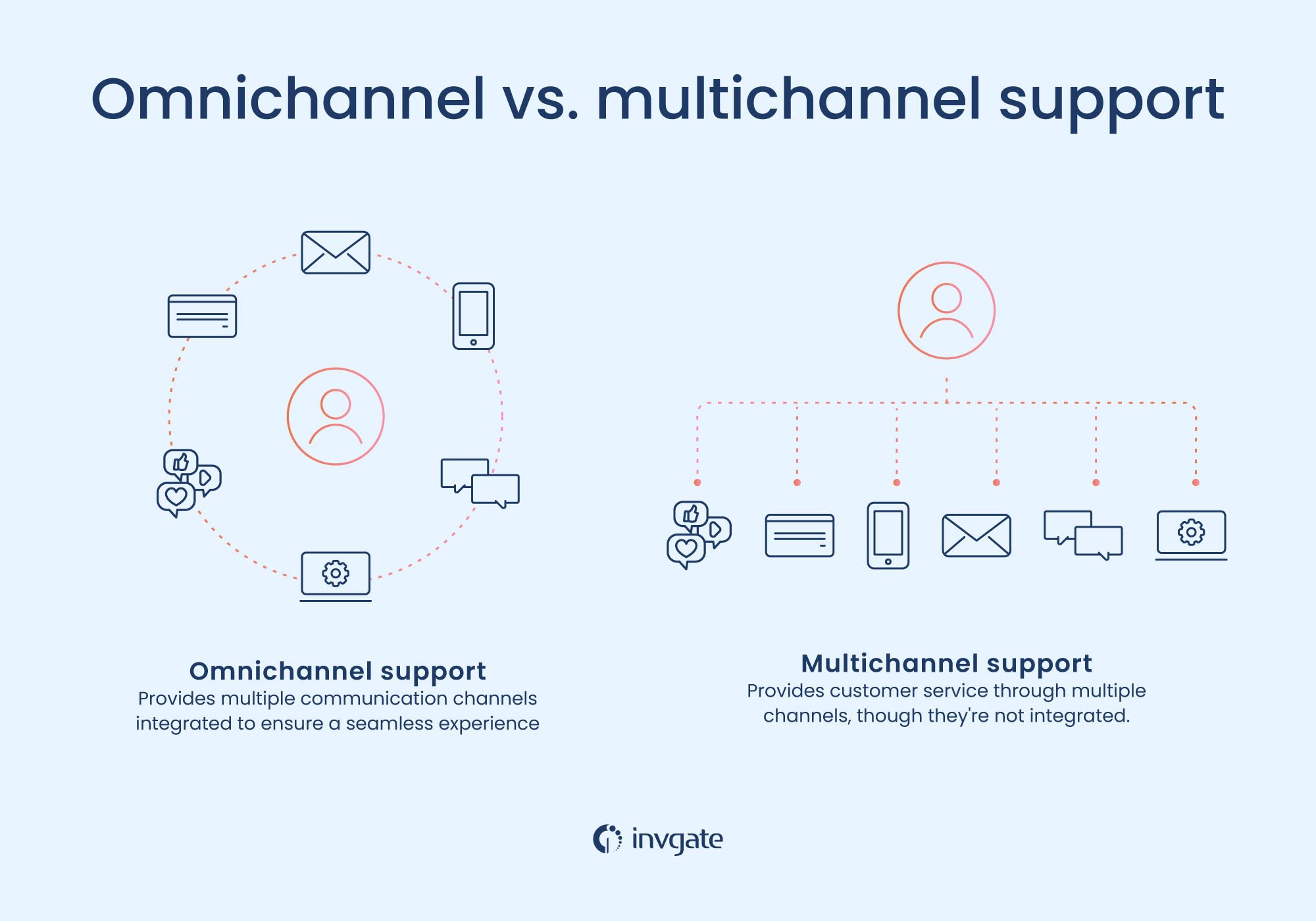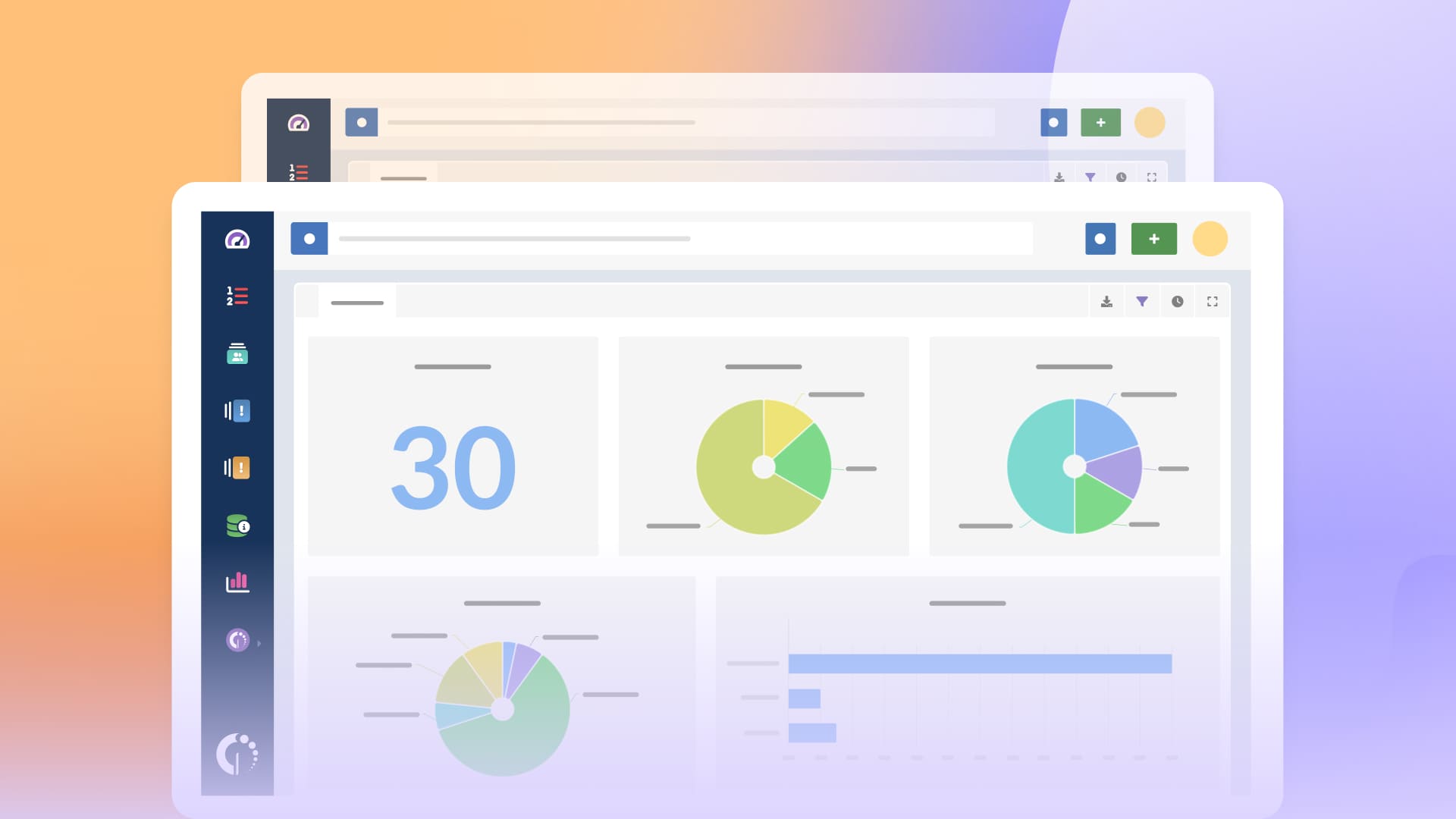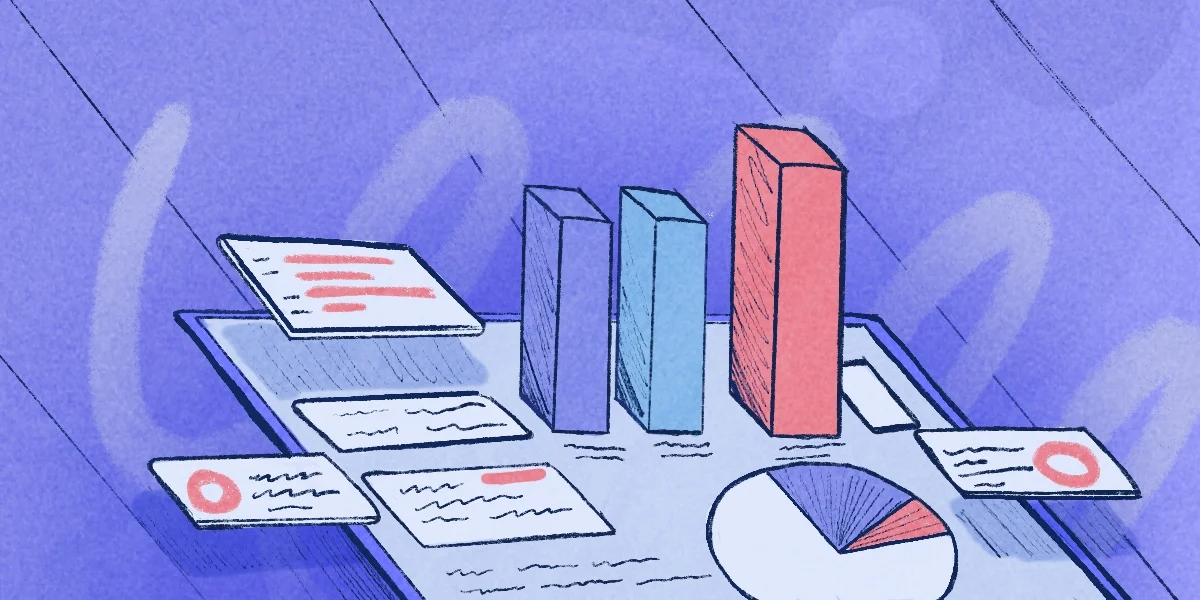Did you know that up to 43% of customers will switch products or cancel a contract because of poor customer service? That’s a huge number! It shows just how important good customer support is for keeping customers happy and loyal. In this context, offering omnichannel customer support is not an option anymore.
Users expect to be able to contact the help desk through the channel that’s most convenient to them, and support teams must try their best to provide a multiplicity of platforms to submit requests while attending to all of them in an efficient way.
The key to doing so is not so much about limiting communication channels but being able to centralize them into just one platform so that agents don’t need to monitor multiple channels and managers can have a centralized view of their team’s workload and performance.
How to achieve this is what this article is all about! Keep reading to discover InvGate Service Management’s options to offer omnichannel support and five easy steps to implement it in your organization.

What is omnichannel support?
Omnichannel support is a modern approach to customer service that uses multiple communication channels to assist end-users. These channels include:
- Phone
- Webchat
- Social media
- Help desk
The goal is to address customer issues promptly and through their preferred channel. For example, a customer might start by sending an inquiry through social media, follow up via email support, and then finalize the resolution through a phone call — all without needing to repeat themselves.
Offering omnichannel support ensures a consistent and convenient experience, boosting customer satisfaction. To achieve this, each channel must work together seamlessly, creating a unified experience regardless of where the interaction begins or ends. For instance, if a customer reports an issue through webchat, they should receive the same level of support and information when calling the support line later.
The rise of omnichannel support reflects the changing expectations of today’s consumers. Businesses are adopting this approach to deliver high-quality service while maintaining efficiency, ensuring they meet the needs of tech-savvy and time-conscious customers.

Omnichannel vs. multichannel support
Omnichannel and multichannel support are often confused for being the same thing, but they actually represent different approaches.
Multichannel support refers to providing customer service through multiple channels, though not necessarily at the same time or as a seamless experience. The focus is on the variety of channels rather than building a better customer service strategy
Omnichannel support improves upon this by ensuring that customers can switch between channels with ease while still receiving the same level of customer service. In an omnichannel customer service strategy, the focus is on building a positive customer experience, but it needs to be accompanied by an excellent employee experience as well. Agents should be able to follow the customer journey seamlessly.
So, even though you can offer multiple ways to contact your IT team according to customer preferences, the service desk is essential to achieve omnichannel support. It will unify all the different communication channels into a platform to allow switching among them without losing traceability and customer context.
Let's review this one more time. If you want an omnichannel support strategy, you'll have to focus on two key users:
- Agents: They need the right tools to comply with Service Level Agreements (SLAs), manage tickets efficiently, and access comprehensive customer context. A well-integrated service desk ensures that agents have everything they need at their fingertips to provide quick and effective support.
- Customers: They expect a seamless customer journey and brand loyalty. They must be able to switch to their preferred chennel without losing the context of their interaction.

6 key benefits of omnichannel customer service
With customers expecting an instant response and a more accessible experience when engaging with brands, having a strategy for omnichannel support is key. If you’re still hesitant, these six key benefits of offering omnichannel customer support will convince you:
-
-
Improved customer experience: By offering customers a wider selection of channels to choose from, you can provide faster and more personalized service tailored to their individual needs.
-
Increased customer engagement: Customers are far more likely to engage with your business when they feel comfortable using a channel of their choice. Omnichannel support makes it easier for customers to reach out and speak with your team anytime.
-
Increased speed of service: When it comes to time to resolve, customer expectations are really high. With multiple channels, you can reduce the amount of time it takes to answer customer queries or provide support and boost customer response at the same time. This is because customers can switch between channels without losing track of their conversation, making it easier and faster to reply – and positively impacting resolution times.
-
Increased customer satisfaction: Customers who feel like they are being heard and supported quickly tend to be more satisfied with their experience. Omnichannel support allows you to provide more prompt service, leading to higher customer satisfaction ratings.
-
Personalized support: Omnichannel support allows businesses to expand beyond traditional channels and offer customized services. Multiplying the request entry points, you provide your users with vast possibilities that adjust to their preferences.
-
Increased brand loyalty: Customers who have a positive experience with your support team are far more likely to remain loyal to your brand in the long term. By providing omnichannel customer service, you can ensure that every customer interaction is high-quality and memorable.
-

6 challenges of omnichannel customer service
Though indispensable, omnichannel customer support does have its difficulties. Before you start implementing it, keep these challenges in mind, as well as the ideas we gathered to help you overcome them.
- Integrating existing systems: Omnichannel customer service requires all of your existing systems to be integrated with each other in order for them to be effective. This can also be a costly endeavor and may require significant changes to your existing infrastructure. InvGate Service Management solves this with native integrations like Microsoft Teams, third-party integrations like Zapier, and a free API.
- Managing the cost: Omnichannel support is a complex and expensive system in itself due to the multiple platforms’ cost and training. Reduce and manage expenses by centralizing all communication sources with InvGate Service Management.
- Keeping up with technology: The customer service world is constantly evolving, and it’s essential for businesses to keep up with the latest trends in order to provide the best omnichannel experience possible. This can be challenging, as new technologies are often complex and expensive to implement, and each niche uses a different media. Collecting customer feedback with InvGate Service Management is a great way to know which upcoming technologies and channels that customers want to use.
- Maintaining data privacy: Data privacy is a primary concern for customers when using omnichannel support, as they need to feel secure when providing their personal information. It’s essential to ensure that you have the necessary security measures in place to protect customer data and keep it safe.
- Providing seamless customer support: Omnichannel customer service requires businesses to provide consistent and continuous support across all channels. Centralizing your customer support in InvGate Service Management will help your team to be compliant with SLAs.
- Managing the ticket volume: Since customers can contact the IT team from multiple sources, omnichannel support can lead to an increased volume of tickets that can be overwhelming if mismanaged. To avoid it, it’s essential to have the right processes in place to manage this influx of tickets quickly and efficiently. And this is where InvGate Service Management's automatic assignment rules, escalation processes, and workflows come in handy to effectively manage the ticket rush without compromising customer service.

How to implement an omnichannel customer support strategy
Now that we have covered the benefits and challenges, it's clear that the implementation process is a crucial part of an omnichannel customer service strategy.
So, let’s take a look at the five steps that can set you to deliver exceptional omnichannel customer service:
1- Analyze your current customer service channels
Before implementing an omnichannel customer service strategy, it’s essential to look at how you currently handle customer queries and support requests. Do you have the right systems in place? Are there areas where there is room for improvement?
2- Choose the right tools
A service desk is a must to provide your agents with a centralized platform to handle requests regardless of their submission source. Plus, it avoids tickets falling through the cracks and gives managers complete visibility of the team's performance.
3- Integrate your tools
Once you have defined your channel scope and you have your InvGate Service Management working instance, it's time to integrate everything. Though the exact integration process depends on each tool, make sure to configure incoming rickets to the corresponding help desk.
You can implement automated routing rules to direct tickets to the appropriate departments or agents based on the nature of the inquiry. This will result in reduced response times and improved customer satisfaction.
4- Train your team
Having the right tools in place is only part of the battle – you also need to ensure that your customer service team is adequately trained in how to use them. Ensure your team is well-trained and encourage cross-functional collaboration to align goals and improve overall performance.
Provide training on the new system and make sure everyone is familiar with the features they will be using. Internal knowledge base articles are an excellent tool for this step.
5- Monitor, measure, and adjust
Once you have implemented your omnichannel strategy, regularly monitoring and measuring its performance is essential. Here are some of the KPIs you can base this assessment on:
- Customer Satisfaction (CSAT): Regularly survey your customers to gauge their satisfaction levels across different channels.
- Net Promoter Score (NPS): Measure customer loyalty and advocacy by asking how likely they are to recommend your brand to others.
- Customer effort score: Track how easily customers can interact with your company's service.
- Channel performance: Analyze the performance of each channel individually to identify strengths and weaknesses.
Regularly review this performance data through weekly or monthly reports, and conduct cross-channel analysis to understand how different channels complement each other. Also, mapping the customer journey will help you identify pain points and areas for improvement. This will allow you to make any necessary adjustments.

Omnichannel support best practices
Any implementation that praises itself has to follow best practices. Here is some advice to offer omnichannel support.
-
Be proactive: Make sure to provide customers with the information they need before they have to ask for it. This can be done through automated messages, live chatbots, or even interactive voice responses (IVRs).
-
Have a five-level support structure: Set up a tiered help desk to ensure that customers get the help they need as soon as they need it. This should include levels for self-service, customer service agents and front-line support staff, and technical experts.
-
Implement a ticket escalation process: An effective ticket escalation system is crucial to ensure that no ticket go unanswered and customers receive rapid responses from the appropriate personnel.
-
Segment customers: Classifying your customers into different categories can help to provide a more personalized experience. This allows you to tailor your support according to the different group needs, leading to better satisfaction and increased loyalty. InvGate Service Management allows you to assign specific users' requests (whether they are VIPs or problematic customers) to a specific agent.
-
Define priorities: Setting different priorities for different types of support requests can help ensure that the most critical tickets are addressed first. With InvGate Service Management, you can set up an automated system that assigns priority levels based on specific criteria.
-
Roll out in small groups: Don't implement the strategy for the whole organization at once. Do it in small stages until your team can adapt and understand the processes

Omnichannel customer support software
Ensuring that all your organization’s communication channels are centralized and traceable can have a big effect on the efficiency of your workplace. By having a unified platform with an integrated experience, you centralize the control over communications and streamline access to data history – making sure everyone has the right information to do their job efficiently.
We mentioned here and there how InvGate Service Management is perfect for allowing your company to provide omnichannel customer support. The reason behind it is that it ensures you quick retrieval, better traceability, and improved workflows by allowing you to integrate communication sources in three different ways:
- Native integrations: Channels that can be installed directly from your instance, including email support, Microsoft Teams, and more.
- Third-party integrations: Channels that can be integrated through Zapier, such as Slack, Google Calendar, PagerDuty, and more.
- Free API: If none of the above is enough, you can always build your own integration with any tool out there.
Once InvGate Service Management is integrated with your business’ tech stack, you can manage all incoming tickets in the same way and from the same platform. Some of the things you’ll be able to do include:
- Sharing knowledge base articles to solve most common issues.
- Escalate tickets when tier 1 can’t solve them.
- Segment your help desks according to the company area in charge (you can create separate help desks for IT, HR, Maintenance, and more) or the office location (by applying muti-site support).
- Automate workflows to decrease manual tasks and avoid human error.
- Monitor your team’s performance with personalized dashboards.
- Create comprehensive reports to share with other stakeholders.
Final thoughts
Omnichannel customer service is essential for providing a great experience in today’s digital world. To successfully implement it, you should:
- Be proactive and make sure customers have the information they need before they have to ask for it.
- Set up an effective ticket escalation system.
- Segment your customers into different categories so you can provide personalized support.
- Define different priorities for different types of support requests.
- Roll out the omnichannel customer service system in small groups, so your team can adapt and understand the processes.
With the help of InvGate Service Management, you can offer your customers a unified and integrated customer experience tailored to their specific needs. This leads to enhanced customer satisfaction and loyalty, improved workflows, and streamlined access to data histories.
So if you’re looking to manage your customer service experience in a more efficient way, ask for a 30-day free trial and start implementing omnichannel customer support today.
Frequently Asked Questions
What is an example of omnichannel support?
An example of omnichannel support is when a customer can contact the same organization through multiple channels such as chat, email, phone, and social media. All communications should be stored in one centralized platform to ensure that customer data and chat history is accessible, allowing more accurate response times.
What is a successful omnichannel strategy?
A successful omnichannel strategy is one that provides customers with a seamless, personalized experience across all communication channels. This includes offering multiple contact options and ensuring that customer data is stored in a centralized location to provide accurate response times. Additionally, organizations should implement quality assurance measures to ensure the highest quality service possible. Finally, they should also be sure to integrate their customer support software with existing systems and processes. This will help ensure that all communication is tracked and allow for better analysis of customer behavior.
What is the main disadvantage of omnichannel?
The main disadvantage of omnichannel is that it can be difficult to implement and maintain. This requires an organization to have a strong understanding of their customer data, as well as all communication channels they use, in order to ensure that any changes made are effective. Additionally, there may be significant costs associated with setting up and maintaining an omnichannel strategy, as multiple communication channels need to be integrated. Finally, customers may become confused if the user experience is not consistent across all of their chosen platforms, and agents can be overwhelmed by the amount and complexity of the work if not set up properly.















